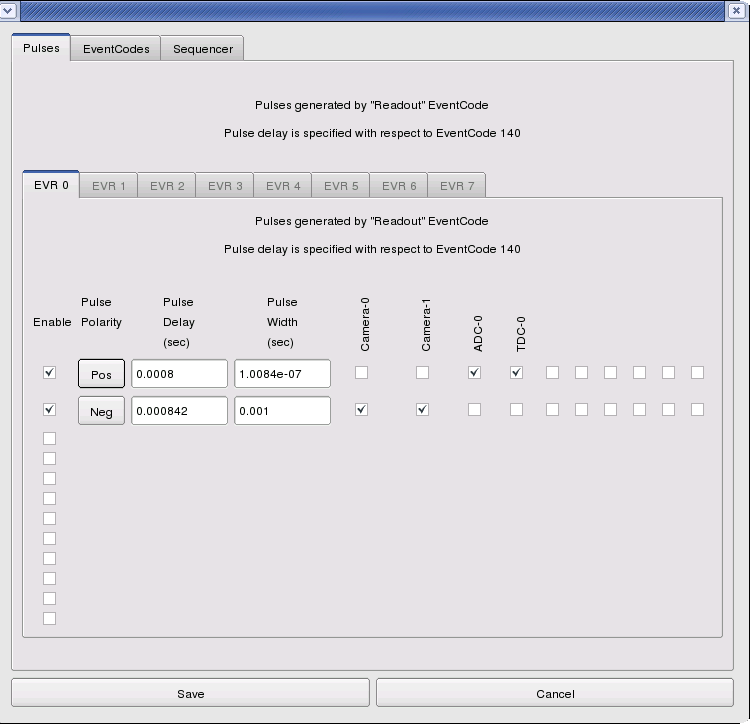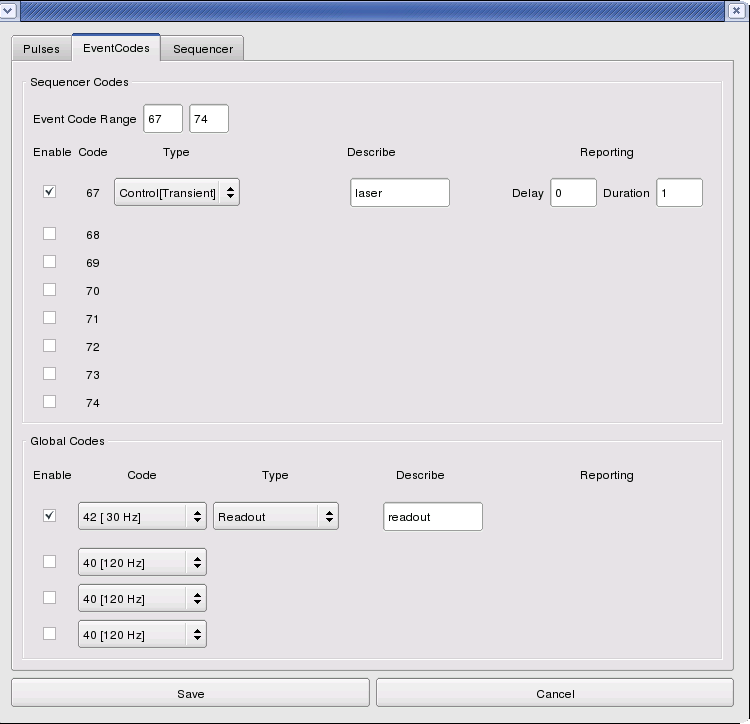Page History
...
The EVR (Event Receiver) is responsible for generating readout triggers for the detector. It can be configured to generate trigger pulses of a selected polarity, duration, and delay, and in response to signaled events (eventcodes) from the accelerator timing system like the arrival of beam. The EVR configuration screen, labeled "EVR" is found among the other detector configurations as described above. After clicking "EVR" in the "Reconfigure" window, you will be able to select either "EvrConfig" or "EvrIOConfig" in the "Component" section.
The "EvrIOConfig" panel allows you to rename trigger lines (cables plugged into the EVR module in the hutch). The "EvrConfig" panel allows you to edit the trigger settings.
The "EvrConfig" panel has three tabs labeled "Pulses", "EventCodes", and "Sequencer". The Pulses tab allows you to edit the set of trigger pulse parameters along with the set of output lines they drive. Pulse delays and widths are expressed in seconds assuming the global timing system clock runs at exactly 119MHz. The pulse delays are expressed with respect to the timeslot reserved for the arrival of eventcode 140 (the eventcode that signifies the presence of beam). The software will internally modify this number when a readout eventcode other than 140 is selected (see below) in order to maintain the same pulse delay with respect to the timing system fiducial.
The EventCodes tab is where you can select to record the arrival of various eventcodes and choose the eventcode from which the trigger pulses will be generated. The Sequencer Codes section is where eventcodes specific to your experiment are listed, and the Global Codes section is where the eventcodes available to all experiments are listed. An eventcode can be designated as Readout, Command, Control(Transient), and Control(Latch). An eventcode designated as Readout will generate the trigger pulses on each occurrence. There should be only one eventcode designated as such. An eventcode designated as Command will generate a software event which can be used for software command generated readout (like for a Princeton camera). That software generated event will collected along with the other detectors on the next occurrence of a Readout event. An eventcode designated as Control(Transient) will be recorded in the datastream for each occurrence with the specified delay and duration (in units of readout occurrences). This allows a record to track the occurrence of some event triggered from that eventcode elsewhere, like the pump laser for instance. An eventcode designated as Control(Latch) will be recorded in the datastream on every readout event following its occurrence until the complementary Control(Latch) code is received. For example, a pulse picker state can be recorded by the occurrence of the commands responsible for its "Open" and "Close" operation. For many experiments, only the Readout eventcode needs to be designated.
...


